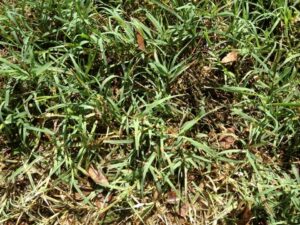Planting Summer Grass
go.ncsu.edu/readext?851277
en Español / em Português
El inglés es el idioma de control de esta página. En la medida en que haya algún conflicto entre la traducción al inglés y la traducción, el inglés prevalece.
Al hacer clic en el enlace de traducción se activa un servicio de traducción gratuito para convertir la página al español. Al igual que con cualquier traducción por Internet, la conversión no es sensible al contexto y puede que no traduzca el texto en su significado original. NC State Extension no garantiza la exactitud del texto traducido. Por favor, tenga en cuenta que algunas aplicaciones y/o servicios pueden no funcionar como se espera cuando se traducen.
Português
Inglês é o idioma de controle desta página. Na medida que haja algum conflito entre o texto original em Inglês e a tradução, o Inglês prevalece.
Ao clicar no link de tradução, um serviço gratuito de tradução será ativado para converter a página para o Português. Como em qualquer tradução pela internet, a conversão não é sensivel ao contexto e pode não ocorrer a tradução para o significado orginal. O serviço de Extensão da Carolina do Norte (NC State Extension) não garante a exatidão do texto traduzido. Por favor, observe que algumas funções ou serviços podem não funcionar como esperado após a tradução.
English
English is the controlling language of this page. To the extent there is any conflict between the English text and the translation, English controls.
Clicking on the translation link activates a free translation service to convert the page to Spanish. As with any Internet translation, the conversion is not context-sensitive and may not translate the text to its original meaning. NC State Extension does not guarantee the accuracy of the translated text. Please note that some applications and/or services may not function as expected when translated.
Collapse ▲Written by: Aimee Jarrels, Extension Master Gardener Volunteer of Pender County
Who doesn’t want thick, lush, and green grass decorating their yards in the summer? The time, effort, and planning all seem to be worth it when you finally get to praise your gardens for the healthy and full grass creating the perfect green carpet for your plants to grow in. But, what’s the best time to plant summer grass seeds, and what’s the best way to grow them?
Timing Matters
Grasses are usually easy to propagate. They are like weeds- fast-growing, low maintenance, and less work- given that the seeds are sown at a time suitable to the grass variety. Most grasses can develop fast, strong, and in large masses when the planting season aligns with the grass’s natural period of active growth. Like other plants, the lifecycle and growth rate of lawn grasses varies from the variety, topography, and climate preferences. Timing the seeding of grasses takes advantage of the natural peak period and helps in better germination, establishment, and growth.
Plant Summer Grass In Spring
Summer season or warm-season grasses like Bermudagrass, Bahiagrass, Zoysia grass, and Centipede grasses fully mature when the temperature is warm, during spring and early summer.
Warm-season grasses germinate and develop quickly and properly when the soil temperature is maintained at a constant 65°F to 70°F range. This usually corresponds to ambient daytime temperatures of 80°F or more (i.e spring to summer season).
Planting grass seeds in late spring to early summer will give the summer grasses the advantage of warmth, which promotes quick growth. The early seasonal rains also keep the soil moist and provide water at the time of germination and establishment.
It must be noted that the best season for planting time of summer grasses will depend on the area in which you live. However, the temperature range should be roughly around 80°F.
Cold wet soil and heavy rainfall should be avoided for at least a few weeks after the sowing of summer grass seeds. While light showers will keep the soil moist, too much water may cause rot and promote the growth of fungi and diseases. Heavy rainfall will cause topsoil erosion and displace the seeds. It may also lead to waterlogging, especially in the case of poor drainage.
How to Sow Summer Grasses?
By Seed
Sowing grass seeds is the most common way to grow summer grasses. Even after timely sowing, full establishment of summer grasses may take up to two to six months under the right conditions. However, proper soil care and maintenance are still necessary for the whole duration to help the germination and development process. For this, regularly clean weeds, schedule watering on the planting site while waiting for the seedling to emerge.
By Sod
Alternatively, instead of sowing seeds, gardens may also use sods. Common summer grasses are usually available in sod forms that ensure you have healthy and developed seedlings to plant into your soil. The establishment process is similar to seedlings, however, the process is faster.
Please contact your local Extension Agent to help guide you through the process.




